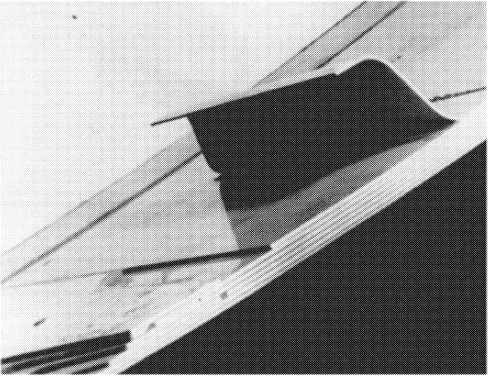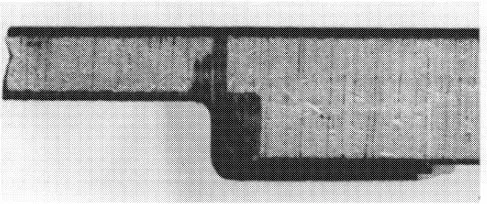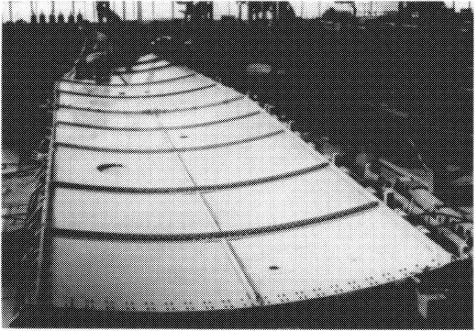
- 520 pages
- English
- ePUB (mobile friendly)
- Available on iOS & Android
eBook - ePub
Adhesive Bonding of Aluminum Alloys
About this book
This single-source reference is designed for anyone who is responsible for selecting the bestsurface treatment and a compatible adhesive for a particular design.Filled with over 300 photos, figures, and tables, Adhesive Bonding of Aluminum Alloyspresents clear analytical methods for examining the adequacy of bonded joints ... methodsfor chemical analysis of an adhesive and primer ... specific instructions on how to anodizealuminum alloys for three different surface treatments .. . recommended primers foranodized alloys ... examples that help you verify fail-safe capacity ... and more.In addition, this guide gives you the latest chemical analysis methods for control, proventest procedures for mechanical durability properties, a wide selection of nondestructive inspectionprocedures, and numerous surface analysis methods.Adhesive Bonding of Aluminum Alloys can be of immediate assistance to materials, mechanical,design, process, manufacturing, automotive, aeronautical, corrosion, and maintenanceengineers; designers and manufacturers of primary and secondary aluminum structures;adhesive scientists; testing and material specialists; and upper-division undergraduateand graduate-level researchers in materials, aeronautical design, and adhesive science.
Frequently asked questions
Yes, you can cancel anytime from the Subscription tab in your account settings on the Perlego website. Your subscription will stay active until the end of your current billing period. Learn how to cancel your subscription.
No, books cannot be downloaded as external files, such as PDFs, for use outside of Perlego. However, you can download books within the Perlego app for offline reading on mobile or tablet. Learn more here.
Perlego offers two plans: Essential and Complete
- Essential is ideal for learners and professionals who enjoy exploring a wide range of subjects. Access the Essential Library with 800,000+ trusted titles and best-sellers across business, personal growth, and the humanities. Includes unlimited reading time and Standard Read Aloud voice.
- Complete: Perfect for advanced learners and researchers needing full, unrestricted access. Unlock 1.4M+ books across hundreds of subjects, including academic and specialized titles. The Complete Plan also includes advanced features like Premium Read Aloud and Research Assistant.
We are an online textbook subscription service, where you can get access to an entire online library for less than the price of a single book per month. With over 1 million books across 1000+ topics, we’ve got you covered! Learn more here.
Look out for the read-aloud symbol on your next book to see if you can listen to it. The read-aloud tool reads text aloud for you, highlighting the text as it is being read. You can pause it, speed it up and slow it down. Learn more here.
Yes! You can use the Perlego app on both iOS or Android devices to read anytime, anywhere — even offline. Perfect for commutes or when you’re on the go.
Please note we cannot support devices running on iOS 13 and Android 7 or earlier. Learn more about using the app.
Please note we cannot support devices running on iOS 13 and Android 7 or earlier. Learn more about using the app.
Yes, you can access Adhesive Bonding of Aluminum Alloys by Edward W. Thrall,Raymond W. Shannon in PDF and/or ePUB format, as well as other popular books in Technology & Engineering & Materials Science. We have over one million books available in our catalogue for you to explore.
Information
1
Introduction
I. HISTORY OF ADHESIVE BONDING IN AIRCRAFT
Typically, adhesive-bonded joints use an intermediate layer that adheres to the faying surfaces of the parts to be joined. That layer (the adhesive) has sufficient strength of its own to transfer mechanical loads from one component into the other. Joining of material or components by means of adhesives has been done for many centuries, but always for the purpose of obtaining an improvement in the properties of the resulting materials and/or structures. There are examples dating back as far as 3000 B.C. [1]. Since then, history has shown many striking applications of adhesive bonding as a means of improving structures and materials. In the history of aircraft, adhesive bonding was used from the earliest years, as shown in Fig. 1. Large adhesive-bonded structures for wooden aircraft (Fig. 2) were used up through the last years of World War II. Those years also saw applications of structural adhesives in metal aircraft.
The first adhesive-bonded joints between metal parts emerged in two different ways. First, they were developed from vibration-damping structures which used rubber layers vulcanized between metal parts; and second, the pioneering research and development work of De Bruyne (1939) in the field of high-performance synthetic wood adhesives led to the discovery that hot curing adhesives could also adhere very well to metal surfaces. De Bruyne also contributed greatly to knowledge of the adhesion phenomena of adhesives on metal surfaces (Fig. 3).

Figure 1 Wooden wing structures of early aircraft were almost entirely joined by adhesive bonding.

Figure 2 Adhesive-bonded cantilever wooden wing structure of four-engine Fokker F-36 airliner with 33-m span, built in 1934.

Figure 3 Norman A. De Bruyne, pioneer of adhesive metal bonding and composite aircraft structures. (From Ref. 2.)
The British de Havilland Aircraft Company saw the importance of the work of De Bruyne at a very early date. This allowed the British Royal Air Force during the last years of World War II to use large numbers of aircraft which had the structural efficiency of their all-wooden wings greatly improved by the application of adhesive-bonded metal reinforcements (Figs. 4 and 5). Shortly after the end of World War II the Fokker Company applied the same polyvinyl acetal/phenolformaldehyde base adhesive to entirely metal structures in both military and civil aircraft [4]. The development of rubber-based metal adhesives, which initially took place in both the United States and Germany, was continued after 1945 in the United States for structural applications in the construction of aircraft. The first large-scale application took place in the structure of the gigantic Convair B-36 strategic bomber (Fig. 6). Another milestone in the history of adhesive bonding was the publication of the results of a research and development program in 1946 by the Swiss Ciba A.G. that led to the discovery of epoxy resins. This new group of synthetic resins appeared to have properties that made them excellently suitable as a base material for structural adhesives [5].
Initially, applications of adhesive-bonded joints were limited to the solution of specific problems, such as the reinforcement of a basically wooden wing structure by menas of adhesive-bonded aluminum alloy spar caps or doubler plates. In the 1950s, the use of adhesive-bonded spar caps or doubler plates. In the 1950s, the use of adhesive-bonded joints in aircraft structures increased considerably and has been growing ever since. A striking example in this respect is the structure of the Fokker F-27 Friendship, which made its first flight in 1955. Four thousand individual parts were composed into 550 bonded assemblies with an area of 370 m2 per aircraft (Fig. 7).

Figure 4 De Havilland Hornet aircraft in which adhesive bonding was used for attachment of light alloy spar caps to plywood shear webs and skin of the wings. (From Ref. 3.)

Figure 5 Details of the Hornet wing spar structure. The light alloy lower spar caps (2) are adhesively bonded to the plywood shear web (7) via a ply of wood veneer (5 and 6). (From Ref. 3.)

Figure 6 Convair B-36 bomber which had adhesive-bonded secondary structure, including magnesium alloy sheet metal.
Two different kinds of adhesive-bonded structures have been developed for aircraft use. First there are the metal-to-metal bonded structures, which are locally reinforced by bonded doubler plates; and second are components composed of bonded multiply laminations where each layer progressively increases the cross-sectional area, such as for stringers and spar caps (Fig. 8) [7].

Figure 7 Beginning with the prototype in 1955 and continuing to this day, the Fokker F-27 Friendship has had a large percentage of the load-carrying structure adhesively bonded. (From Ref. 6.)

Figure 8 Cutaway section of the lower wing panel of the Fokker F-27 airliner, showing the laminated metal skin and a bonded stringer.

Figure 9 Cross section over a sandwich floor panel with a metal edge member and end-grain balsawood core.

Figure 10 Bonded honeycomb sandwich wing structure for the Bréguet Atlantic. (From Ref. 8.)
The second category of adhesive-bonded structures is that which contains bonded joints between rather thin metal skin sheets and low-density core material, called “sandwich” structures (Fig. 9). Initially, plastic foam and end-grain balsa wood were used as core materials; later, honeycomb made out of paper, glass fiber, aluminum foil, and organic fiber [e.g., (Nomex) (Dupont)] was used. Later applications of sandwich structures also had bonded doubler plate reinforcements, and profile-type edge members were incorporated (Fig. 10).
II. REASONS FOR BONDING IN AEROSPACE STRUCTURES
Reasons for the use of adhesive-bonded aircraft structures of all categories have increased considerably in recent years. Skin panels with adhesive-bonded stiffeners were originally preferred over riveted panels of similar configuration for reasons of their greatly improved local stability. This was due to the continuously bonded stiffener flanges, shown in Fig. 11. As a result of this, the load-carrying capacity under axial compression or shear loading is improved considerably. This is the case not only for static loading but also under conditions of alternating loading either at low frequency, such as that due to gusts during flight, or at high-frequency loading, such as occurs under high sound pressure in the vicinity of jet engines (Fig. 12). Only during the last decades has the background of the excellent fatigue properties of adhesive-bonded structures been fully explored. Adhesive-bonded stiffener panels, shear webs, and laminated skins have been shown to have very attractive fracture mechanical properties. These properties have been the focus of attention of modern structural designers, who now have the task of developing “damage-tolerant” structures [10]. There are structures in which not only is the operational lifetime until the occurrence of the first crack important, but also behavior in the cracked condition. Low crack propagation rates and high residual strength in the cracked state are of great interest today [11]. This will lead to an even larger application of adhesive-bonded joints in future aircraft structures. So the idea has developed not only of bonding the longitudinal stiffeners onto the fuselage skin, but also of bonding the flanges of the transverse frames, ribs, and bulkheads to skin panels.

Figure 11 Skin panel with bonded tophat stringers under axial compression load shows how the stable areas of the bonded flanges define the buckling configuration.

Figure 12 (a) Riveted structure of landing gear strut fairing door, showing extensive damage due to sonic fatigue. (b) Redesigned landing gear strut fairing door with bonded honeycomb sandwich structure, showing satisfactory sonic fatigue resistance. (From Ref. 9.)
The great interest in improved fracture mechanical behavior of metal aircraft structures has derived from the rather disappointing operational results obtained with components that have been machined from solid material. The latter method had been chosen because of its high production efficiency, in particular when numerically controlled milling machines could be applied. The rather low modulus of elasticity of the cured adhesive layer compared with that of the sheet metal allows the bonded elements to deform practically independently when a fatigue crack has developed (Fig. 13). This plane stress condition is the basis for the superior fracture mechanical behavior of the metal-laminate composite. This can be attributed to the favorable properties of the thin rolled sheet, which are much better than those of thick solid plate (Fig. 14).
Sandwich structures, which originally were adopted because of their attractive strength/stiffness ratio aspects, are at present also chosen for a number of other r...
Table of contents
- Cover
- Half Title
- Title Page
- Copyright Page
- Table of Contents
- Preface
- Contributors
- 1 Introduction
- 2 Chromic Acid Anodize Process as Used in Europe
- 3 Sealed Chromic Acid Anodize
- 4 Phosphoric Acid Anodize
- 5 Surface Analysis
- 6 Adhesive Selection from the User’s Viewpoint
- 7 Epoxy Adhesives
- 8 Elevated-Temperature-Resistant Adhesives
- 9 Mechanical Properties of Adhesives
- 10 Environmental-Durability Testing
- 11 Chemical Analysis for Control
- 12 Coatings
- 13 Structural Analysis of Adhesive-Bonded Joints
- 14 Basic Principles for Tooling Design and Inspection
- 15 Nondestructive Inspection
- 16 Adhesive-Bonded Aluminum Structure Repair
- Index